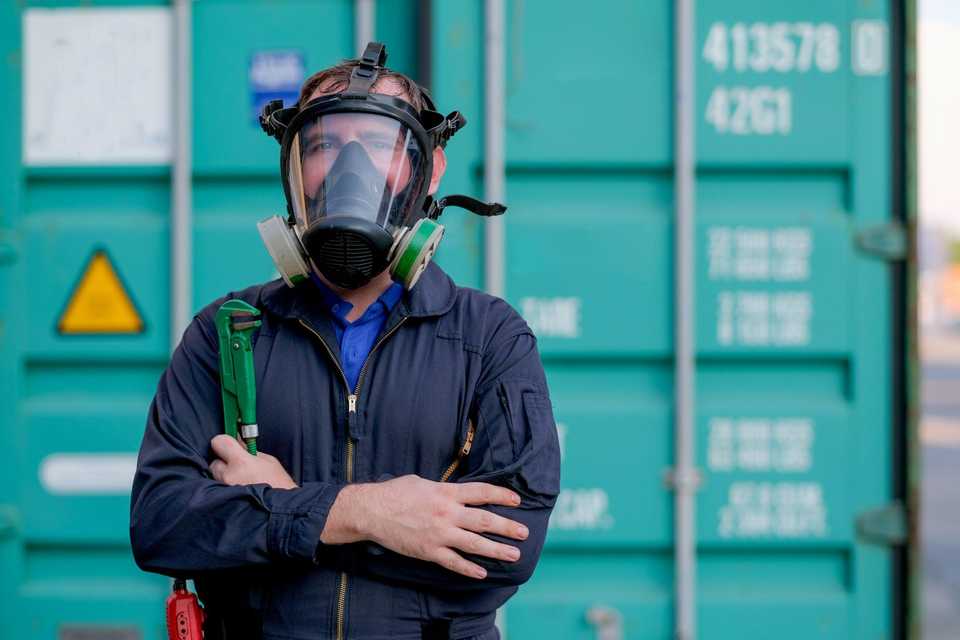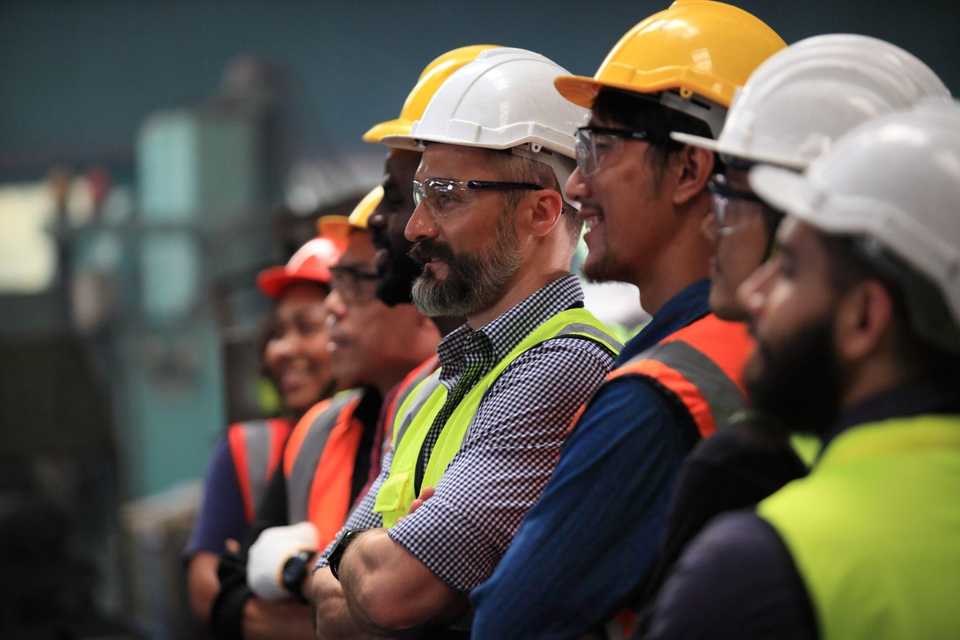The Occupational Health and Safety Act (OHSA) in Ontario serves as the foundational legal framework designed to ensure the safety and health of workers across workplaces.

Becoming law in 1979 and significantly amended in 1990 and the years following, the OHSA outlines the rights, duties, and responsibilities of all workplace parties, including employers, workers, supervisors, and others.
Keep reading to learn more from JuriGo about the procedures for addressing workplace hazards, OHSA’s enforcement mechanisms, and other important provisions!
What does the OHSA do?
The OHSA is based on the principle of shared responsibility for workplace safety, with an emphasis on the employer’s role in providing a safe working environment.
However, it also underscores the importance of collaboration among all workplace parties to maintain safety standards. Central to the OHSA is the Internal Responsibility System (IRS), which states that workplace safety is a collective responsibility. Key provisions of the OHSA include:
| The roles of workplace parties | The OHSA outlines the duties of health and safety representatives and joint health and safety committees (JHSCs), which play an important role in hazard identification and safety recommendations. |
|---|---|
| Enforcement and compliance | The enforcement of the OHSA is managed by the Ministry of Labour, Immigration, Training and Skills Development (MLITSD). Inspectors have the authority to issue orders, stop unsafe work, and initiate legal action against non-compliance.Violations may result in significant fines. |
| Hazard management | The Act provides procedures for the identification, assessment, and mitigation of workplace hazards, emphasizing preventive measures and the workers’ right to refuse unsafe work. |
| Training and information | Employers must provide training and information on the OHSA’s provisions, rights, and duties, alongside specific training on identified hazards. |
The Internal Responsibility System
One of the main goals of the OHSA is to ensure a strong Internal Responsibility System (IRS), which assigns health and safety responsibilities to everyone in the workplace. The IRS’s effectiveness is based on the active participation and cooperation of all workplace parties.
For instance, employers bear the primary responsibility for ensuring a safe work environment, but workers also have significant roles, including the duty to report hazards and comply with safety regulations.
Supervisors are also responsible for various tasks, such as enforcing safety measures, taking precautions to protect workers, and informing them about any potential hazards.
The rights of workers under the OHSA
While the OHSA is primarily focused on workplace parties, it’s essential for the general public to have awareness of workers’ rights and employer duties. These can lead to safer public spaces, especially in industries that interact directly with the public, such as construction, retail, and healthcare.
Employer responsibilities
Employers have the most substantial obligations under OHSA, including:
- Establishing a safe environment: Employers are required to ensure that the workplace is safe and free from hazards. This includes implementing safety measures, maintaining equipment, and ensuring that safety protocols are followed.
- Providing training and information: Employers must provide workers with the necessary training and information to perform their jobs safely. This includes training on specific hazards related to the job, safe work practices, and emergency procedures.

- Developing and posting safety policies: Employers are required to develop and post safety policies and procedures in the workplace. This includes a health and safety policy, a violence and harassment policy, and emergency response plans.
- Reporting incidents: Employers must report workplace incidents, including injuries, illnesses, and fatalities, to the MLITSD and, in some cases, to the workplace joint health and safety committee or health and safety representative.
- Complying with OHSA regulations: Employers must comply with all relevant regulations under the OHSA, including those related to the control of hazardous substances, equipment safety, and workplace ergonomics.
Worker Responsibilities
The OHSA outlines distinct responsibilities for both employers and workers to ensure a collaborative approach to workplace safety. Worker responsibilities include:
- Following safety rules and procedures: Workers are required to follow all safety rules and procedures established by their employer. This includes using personal protective equipment properly and following safe work practices.
- Participating in training: Workers must participate in all training programs provided by their employer. This ensures that they are aware of potential workplace hazards and know how to protect themselves and their coworkers.
- Using equipment safely: Workers must use tools, equipment, and machinery safely, following the manufacturer’s instructions and the training provided by their employer.
- Reporting hazards: Workers are encouraged to report any workplace hazards or safety concerns to their supervisor or health and safety representative.
Worker rights
In addition to the responsibilities workers are subject to, they are also entitled to three fundamental rights under OHSA:
- The right to know about potential hazards and receive the training and information necessary to perform their job safely.
- The right to participate in identifying and resolving workplace health and safety issues, either directly or through JHSCs or health and safety representatives.
- The right to refuse unsafe work without fear of reprisal, following a specific procedure outlined in the Act.
Procedure to refuse unsafe work
The procedure for refusing unsafe work under the OHSA is designed to protect workers from being forced to perform work that they believe is dangerous to either their own health and safety or that of their coworkers. Here’s a summary of the procedure outlined in the Act:
Step 1: Refusing to work
The worker who believes that the work is dangerous must first report the refusal to their supervisor or employer, explaining the reasons for the belief that the work is unsafe.

Step 2: On-site investigation
Upon receiving a report of refusal, the supervisor or employer must immediately investigate the matter in the presence of the worker who refused the work and a worker representative from the JHSC or a health and safety representative. If there is no representative, a worker chosen by the workers or the union should be present.
Step 3: Employer's response
After the investigation, if the employer or supervisor agrees that there is a danger, they must take immediate action to eliminate or control the hazard. The worker is then asked to return to work.
Step 4: Continued refusal
If the worker still believes the work is dangerous after the employer’s investigation and actions, the worker can continue the refusal. The worker or the employer/supervisor must then notify the MLITSD.
Step 5: MLITSD investigation
An MLITSD inspector will then come to the workplace to conduct an investigation in the presence of the employer, the worker who refused the work, and a worker representative from the JHSC or health and safety representative.
Step 6: Inspector’s decision
The MLITSD inspector will make a decision based on their investigation. If the inspector finds that the work does not endanger the health and safety of the worker, the worker will be required to return to work. If the inspector finds that the work is indeed dangerous, the employer will be ordered to remedy the situation.
Step 7: Circumstances when the right to refuse is suspended
Workers do not have the right to refuse work if the refusal puts the life, health, or safety of another person directly in danger, or if the danger is a normal condition of their employment (e.g., police, firefighters).
Step 8: No reprisals
The OHSA prohibits any reprisals against workers who have refused work in accordance with the Act. This means that workers cannot be disciplined, fired, or penalized in any way for exercising their right to refuse unsafe work.
Enforcement and compliance
The OHSA provides for the enforcement of its provisions through MLITSD inspectors who have the authority to issue orders, stop work, and initiate prosecutions. Compliance is achieved through a combination of proactive inspections, investigations of incidents, and responses to complaints.
What’s the impact of compliance on workplace safety?
Compliance with the OHSA and its regulations has a significant impact on workplace safety, leading to:
- Reduced workplace injuries and illnesses: Compliance with safety standards and regulations helps prevent accidents, injuries, and occupational illnesses, thereby creating a healthier work environment.
- Improved worker morale: A safe workplace improves worker morale and productivity. Workers are more likely to be engaged and satisfied with their jobs when they feel that their health and safety are prioritized.
- Legal and financial benefits: Compliance helps avoid legal penalties, fines, and potential lawsuits associated with workplace accidents. It also reduces costs related to worker compensation claims and lost productivity.

- Enhanced reputation: Organizations that prioritize workplace safety and comply with OHSA regulations enhance their reputation among clients, suppliers, and potential employees - potentially leading to business growth and attracting top talent.
Fines and penalties
| Non-compliance with the OHSA can result in significant penalties. Workers can face fines up to $500,000 per violation, while corporations and officers of corporations can be fined up to $1.5 million per offence. |
|---|
Beyond financial penalties, convictions can also lead to imprisonment, underscoring the seriousness with which workplace safety violations are treated.
How are toxic substances regulated within workplaces across Ontario?
The Act mandates that all toxic substances in the workplace must be clearly identified, which is important for informing workers about the potential hazards they face and the precautions they must take.
To minimize worker exposure to toxic substances, the OHSA outlines specific measures, such as:
| Maximum exposure limits | For each designated substance, the regulation prescribes maximum exposure limits to protect workers from the health risks associated with excessive exposure. |
|---|---|
| Control measures | Employers are required to implement control measures to reduce worker exposure. These measures may include engineering controls, such as improved ventilation systems, administrative controls, such as job rotation to limit exposure time, and the use of personal protective equipment. |
| Assessments and monitoring | Workplaces that use designated substances must conduct regular assessments and monitoring to ensure that exposure levels do not exceed the prescribed limits. This includes air quality testing and health surveillance of workers. |
Regulations for designated substances
The OHSA enables the Lieutenant Governor in Council to prescribe these substances and regulate their use within workplaces.
To date, eleven substances, including asbestos, lead, mercury, and arsenic, have been designated under the Act. For each designated substance, the Act specifies maximum exposure limits and outlines strict controls for their use and assessment in the workplace.
The OHSA and its regulations also require employers to provide workers with access to information about the toxic substances in their workplace, including safety data sheets and training on safe handling practices. This information must be readily accessible to workers, so that they are informed and prepared to work safely with hazardous materials.
How a legal professional might help
Adopting best practices such as thorough risk assessments, regular safety training, and open communication channels about health and safety concerns are important steps in protecting all workplace parties.
However, the complexities of the OHSA and its regulations can sometimes be confusing, especially when dealing with specific hazards or when incidents occur.

In such instances, seeking legal advice can provide invaluable guidance to ensure that your workplace not only meets legal standards but also implements best practices in health and safety management.
A specialized lawyer can offer tailored advice, help you navigate the legal landscape of workplace safety, and ensure that your workplace’s policies are in full compliance with the law.
Don't leave your safety to chance - JuriGo’s lawyer matching service is here to help, free of charge and without obligations!
By simply filling out the form below, we’ll connect you with the right legal expert for your specific needs in your area.